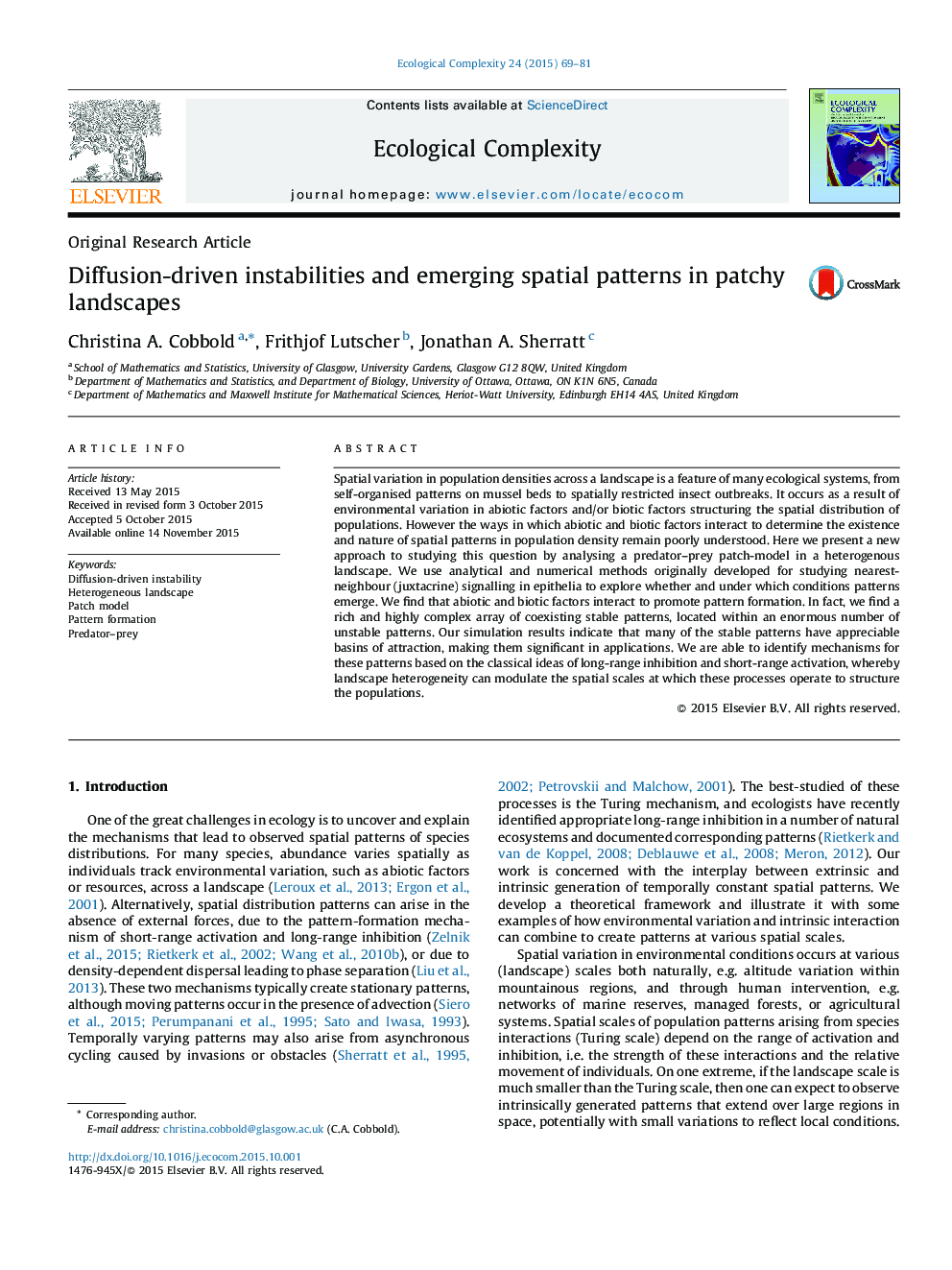| کد مقاله | کد نشریه | سال انتشار | مقاله انگلیسی | نسخه تمام متن |
|---|---|---|---|---|
| 4372429 | 1617090 | 2015 | 13 صفحه PDF | دانلود رایگان |
• A patch model of predator–prey interaction on a heterogeneous landscape was constructed.
• The interaction of abiotic and biotic factors to produce spatial patterns in population density is explored.
• There are potentially many stable, coexisting, spatially structured states with large basins of attraction.
• Low predator residency time in good patches appears to be an important ingredient for determining the wavelength of patterns.
• The patterns we find can be explained with the classical mechanisms of long-range inhibition and short-range activation.
Spatial variation in population densities across a landscape is a feature of many ecological systems, from self-organised patterns on mussel beds to spatially restricted insect outbreaks. It occurs as a result of environmental variation in abiotic factors and/or biotic factors structuring the spatial distribution of populations. However the ways in which abiotic and biotic factors interact to determine the existence and nature of spatial patterns in population density remain poorly understood. Here we present a new approach to studying this question by analysing a predator–prey patch-model in a heterogenous landscape. We use analytical and numerical methods originally developed for studying nearest-neighbour (juxtacrine) signalling in epithelia to explore whether and under which conditions patterns emerge. We find that abiotic and biotic factors interact to promote pattern formation. In fact, we find a rich and highly complex array of coexisting stable patterns, located within an enormous number of unstable patterns. Our simulation results indicate that many of the stable patterns have appreciable basins of attraction, making them significant in applications. We are able to identify mechanisms for these patterns based on the classical ideas of long-range inhibition and short-range activation, whereby landscape heterogeneity can modulate the spatial scales at which these processes operate to structure the populations.
Journal: Ecological Complexity - Volume 24, December 2015, Pages 69–81
